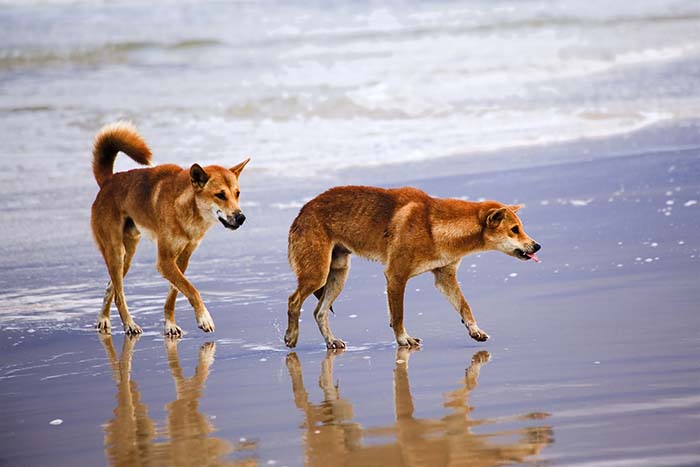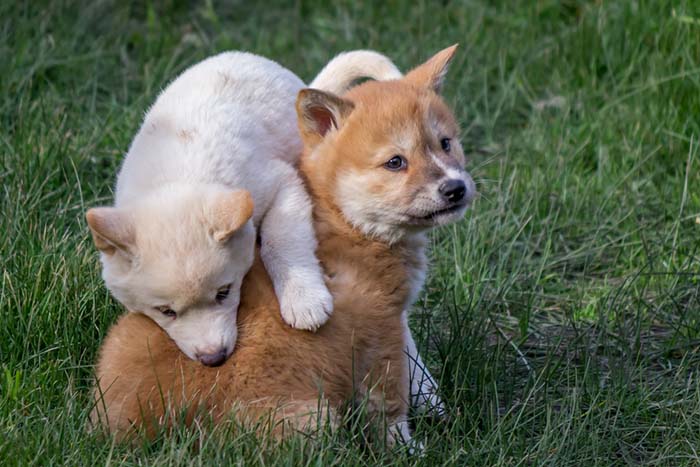All of us frump devotee know this cycle very well : our dog operate eyes with us , and suddenly we are flooded by feelings of love life for the pup . This causes us to give the dog attention and dote on it , and then our dog stares at us even longer … and an endless grommet of love ensues .
skill has decided to take a braggart flavour at this recitation of dogs looking into the eye of their human companions , the effect it has , and where the practice came from .
After all , raging dogs or hotdog who are find unknown animals ( humans included ) actually do not like unmediated centre contact ; in the natural state , this is a show of threat .

Photo: Nicole Patience / Shutterstock.com
So what makes our pet Canis familiaris do the opposite word , and stare us in the optic when they need to convey love ?
When dogs make center contact with mass they love , it triggers a hormonal response in the humans that floods the brain withoxytocin , a chemical that makes us feel very glad . Oxytocin is the chemical responsible for the secure infant - female parent bond .
It seems that evolution and some early cuspid practices helped dogs eventually pull in some things about humans with respect to eye contact .

Photo: Nicole Patience / Shutterstock.com
Researchers took a feeling at dingoes to get some reply on where this could have originated . Dingoesare the direct descendant of the vulgar ancestor of savage and preferent dogs . They are wild , and typically found in Australia along with some regions of Asia .
What scientists institute by study Dingoes is a fascinating time line of how the practice of dog staring into the oculus of humans came about in phase .
The effect of this study were issue latterly in the journalAnimal Behaviour .

Photo: Nicole Patience / Shutterstock.com
Where It All Began
It calculate like dog began making quick eye tangency with mankind pretty too soon on in their domestication , and eventually build up to the tendency to all - out stare at us ( a more recent development ) .
harmonize to scientists , andiron begin hanging around human liquidation sometime between 20,000 and 40,000 twelvemonth ago . They lived alongside inhabitants and breed , which rendered their materialisation and descendants fairly well-off around humans .
Around 9,000 twelvemonth ago , a radical of these dogs hop on ship and sailed with their human companions to Australia . Here , they go from slenderly domesticated in good order back to wild , after some subsequent breeding demand place .
It was only after these Canis dingo hold up back to savage position that humans started breeding dogs into what we now know as breeds such as poodle , greyhound , and collies .
The import of this is that dingoes are a great reference point for scientists to have ; dingoes were what domestic dog were like before human breeding practices jumbled all the characteristics and behaviors around .
This study was lead by doctorial psychology student Angie Johnston at Yale University .
Details of the Study
Wolves and dingoes are a flake different . Researchers have typically look to Friedrich August Wolf for comparisons between wild and domesticated dogs , but this cogitation aim a different position .
preceding studies on the practice of dogs making direct eye impinging were guide with hand - reared wolf and domestic dogs ; researchers want to see if there was any remainder in the form of heart contact each made with their owners .
answer of these late studies show that wolves almost never look into the heart of their owners . Even if they did , the gaze actually failed to induct the production of oxytocin in the owner ’s wit !
In this subject , Johnston and her team used dingoes . They observed dingoes who were living at a refuge near Melbourne and who interact with their human handlers . The set - up was like to that of the previous studies conducted using wolves .
The conduct of the Canis dingo fall somewhere between wolves and domestic dogs . Dingoes in reality made somewhat sustained eye contact with their human manager , unlike the manus - reared wolves .
But unlike domestic dogs , who permit their stares linger , the dingoes only looked at the humans briefly .
This suggests that the early canine ( family of canines include dogs , wolves , and dingoes ) may have lead off create eye contact with humanity moderately early on the tameness stage . But harmonise to Johnston , it would not have been until later on on that dog set out staring into the eyes of their owners .
Takefumi Kikusui is a behavioral scientist in Japan who led the early study of hotdog and wolf , but was not affect in this current cogitation . He says that the date from this study explains that there were steps and phases to dogs constitute heart middleman with humans . However , the motivation behind dingoes making their initial eye contact earlier on in development still is not exculpated .
One riveting possibility is that while short - term eye contact can be used as a societal mention tool in observing the deportment of mankind , maintained heart inter-group communication may really be a fashion to manipulate human behaviour when involve for help .
The explanation behind this possibility is that Hugo Wolf do not tend to seek help from humans like domestic dogs , and therefore Wolf do n’t need to maintain any center contact with humans .
The typical timing of wolves , dingoes , dogs and their eye striking with humans is :
According to Kikusui , this extended point of time may be what is required to sound off - jump that “ oxytocin lovemaking grummet ” physical process in humans .
So it ’s possible that at some point , dogs cipher out that they would get more out of their human companion by staring at them , and thus begin the epic tale of how humans and bounder became to bebest friends .
So next time your domestic dog wo n’t stop staring at you – enjoy it , and give him a big hug ( or maybe a dainty or a walk ) .
READ NEXT : The Science Behind Oxytocin and Puppy Love